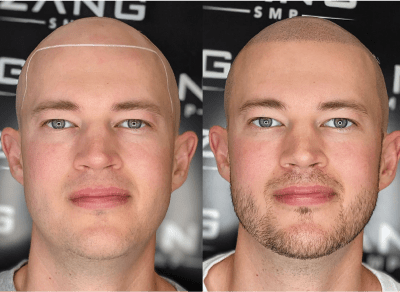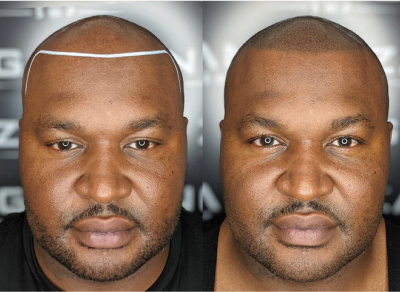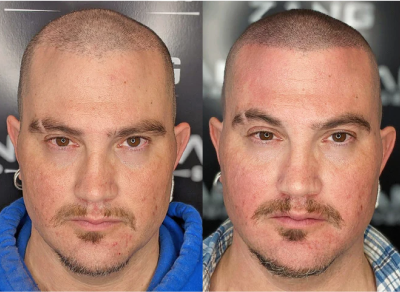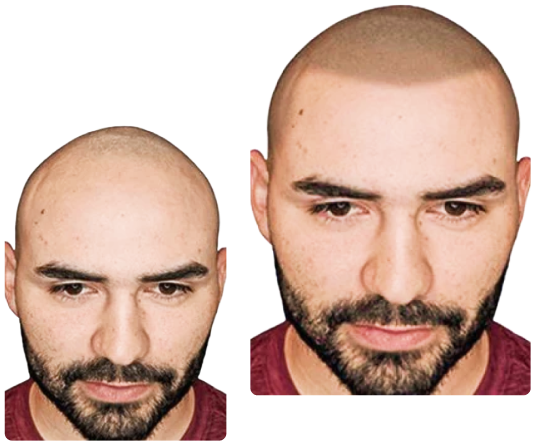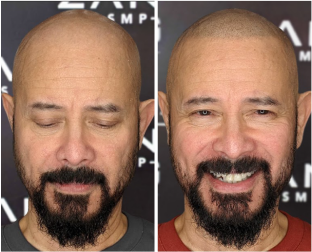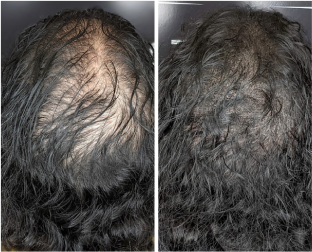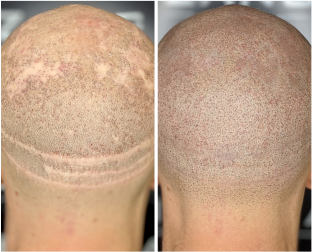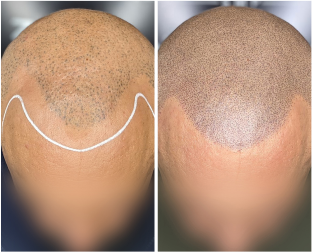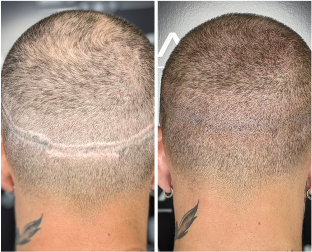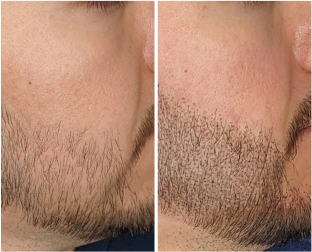How is Male Pattern Baldness Diagnosed and How Does it Influence Hair Loss?
Male pattern baldness is diagnosed by observing its specific hair loss pattern, which generally affects the hairline and crown, with genetics and hormones playing major roles.
Stages of Male Pattern Baldness
The Hamilton-Norwood scale is utilized by professionals to assess hair loss, with stage 1 being the least severe and stage 7 showing total baldness on the top of the head. Patients in Norwood stages 1 to 3 usually have a hairline that recedes mildly to moderately.
Individuals at Norwood stages 4 to 5 have severe hair loss in the frontal zone with considerable thinning at the crown. Norwood stages 6 to 7 indicate near-total or complete hair loss on the entire top of the scalp.
There are also less frequent forms of male pattern baldness, such as uniform thinning of the scalp without hairline receding or loss at the crown without affecting the hairline.
Treatment For Male Pattern Hair Loss: Scalp Micropigmentation
Scalp Micropigmentation (SMP) is a non-surgical method designed to address male-pattern baldness. This technique involves tattooing the scalp to mimic the look of hair follicles. SMP is effective in providing the appearance of a full head of hair, no matter the severity of the hair loss.
While hair transplantation relies on a limited supply of donor hair grafts, SMP can enhance hair growth and produce unlimited hair density right away, without any downtime.
At Zang SMP, we apply organic, plant-based pigments to the scalp. These pigments resemble hair follicles, providing a dramatic change from a bald head to a cropped (buzzed) appearance.
You don’t need surgery or a painful hair transplant with SMP for men. This treatment helps you achieve the hairstyle you prefer. If you have an unwanted bald head, we can assist. SMP offers the hair appearance necessary to boost your image.
SMP generally involves two to three treatments. The first two treatments are given a week apart for male-pattern hair loss. A possible third treatment would take place one to three months later.











